You are likely familiar with various building materials and already know what breeze blocks are. But you could think these patterned concrete or stone blocks got their name because of their hollow spaces. It might surprise you that it was actually from adding a composite to solid blocks in the late 1800s. The composite “coke breeze” is the true origin of the name.
The term “breeze block” is predominantly used in the UK, Australia, New Zealand and other areas. In the United States, they are typically referred to as “screen blocks” or “decorative blocks.” This guide will look at what makes this construction material unique from all others.
Breeze Blocks History
Breeze blocks, also known as cinder blocks or screen blocks, have a fascinating history that dates back over a century. Breeze blocks in their hollow form were first introduced in the early 1900s as a solution for a robust, durable and affordable building material. At the time, traditional brick and stone were the primary building materials used for construction. But they were expensive and time-consuming to produce.
Early to Mid 1900s
Initially, builders used breeze blocks primarily for industrial and commercial buildings, such as factories and warehouses. Over time, breeze blocks began to be used in residential construction, as well, as people recognized their benefits and versatility.
Frank Lloyd Wright created several houses using the breeze block designs during the 1920s, including Ennis House, the last and largest of Frank Lloyd Wright’s collection of “textile block” houses. Wright built the house in 1924 for Charles Ennis and his wife, Mabel. The house consists of over 27,000 concrete blocks.
Post War & Beyond
Breeze blocks also played a significant role in the post-World War II building boom. They were an affordable and easy-to-use building material during the economic recovery. The blocks were still appearing in 1962 as George Barris did a photo shoot with Marilyn Monroe using a breeze block wall for the composition.
Modern breeze blocks are still often used in areas of high heat. Their spaces allow air to circulate and light in while still creating privacy.
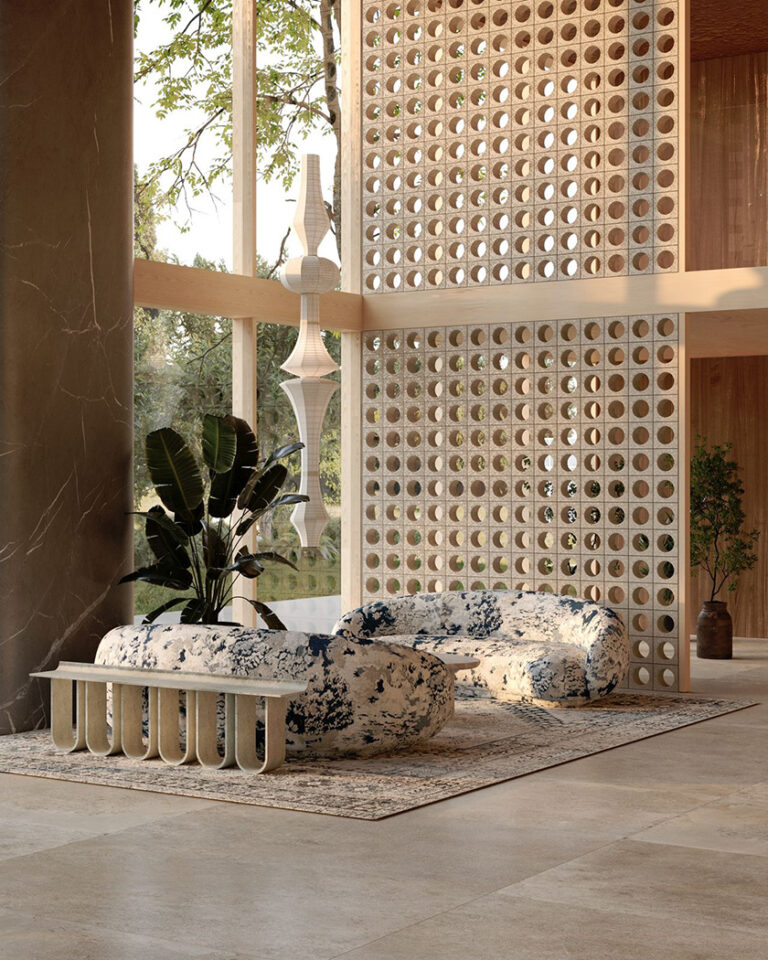
Types of Breeze Blocks
Breeze blocks include textured, decorative and screen blocks, which can add aesthetic interest to a space. Understanding the different types of breeze blocks can help architects and engineers choose the best block for each project based on its unique requirements and design goals:
Solid Breeze Blocks
Solid breeze blocks are made from solid concrete or stone and are the most basic type. They are ideal for load-bearing walls and structures. They are also suitable for soundproofing, as they provide excellent acoustic insulation.
Hollow Breeze Blocks
These are similar to solid breeze blocks, but they have hollow cores that make them lighter and easier to handle. The open spaces within the blocks also provide excellent thermal insulation.
Patterned Breeze Blocks
You can characterise these by their intricate patterns and shapes, including diamond, herringbone and zigzag. Architects use patterned breeze blocks to create interesting visual effects in building facades, as well as in landscaping and furniture design.
Coloured Breeze Blocks
The blocks are coloured during manufacturing or painted after installation.

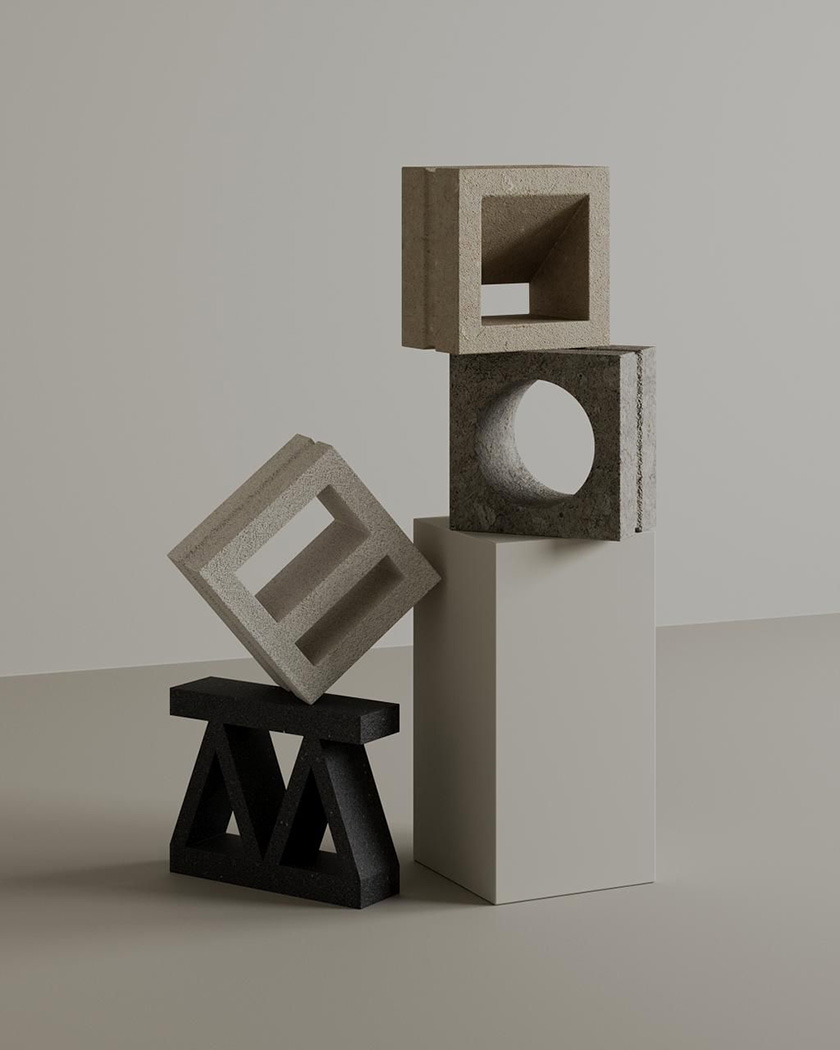
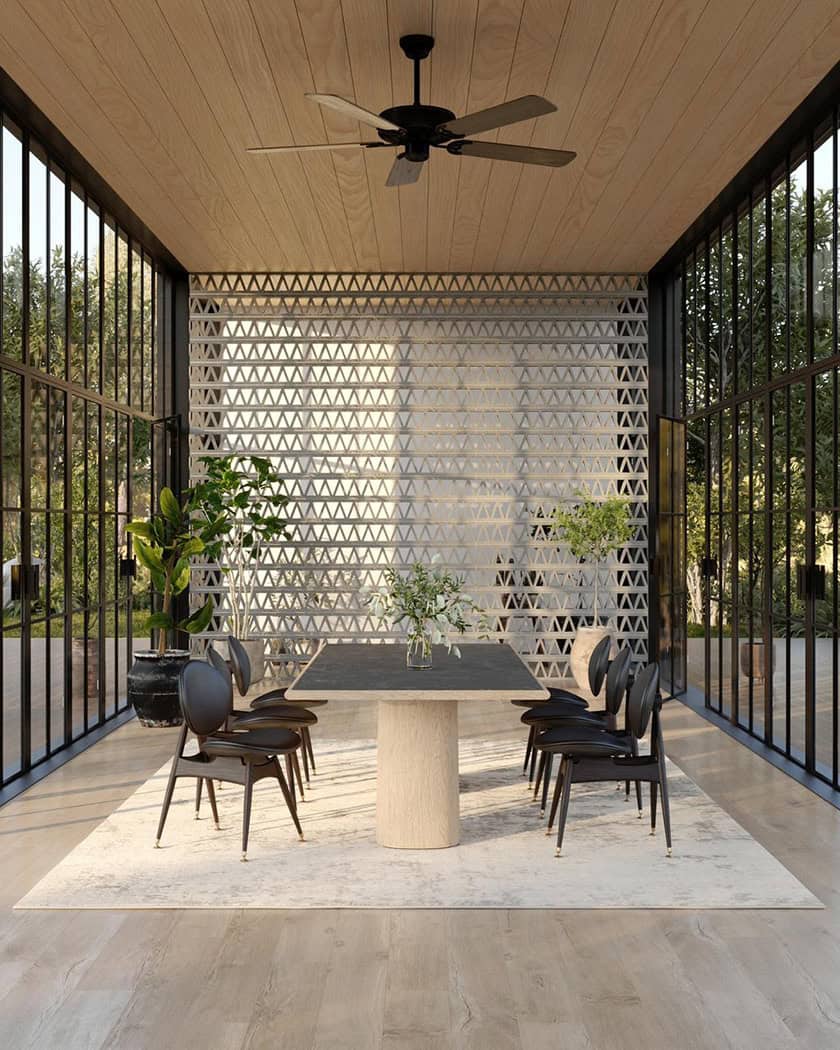
Common Breeze Block Applications
Breeze block uses and applications create a unique aesthetic that can add visual interest to any space. Their resistance to pests, fire and water makes them a practical choice.
Load Baring Walls
A load-bearing wall supports the weight of the structure above it and helps distribute the weight of the building and keeps it stable. To use breeze blocks in this space, take advantage of their strength and durability, as they are ideal for support. You can use them for single-story and multi-story buildings in conjunction with steel framing to provide additional support.
Retaining Walls
Breeze blocks have high compressive strength and withstand heavy loads and pressure without breaking or cracking. The blocks are ideal for retaining walls that must hold back soil or other materials, which can exert significant pressure on the wall. Additionally, they are ideal for outdoor applications, as they are durable and resistant to weathering and erosion.
Decorative Walls
Due to their casting molds, you can create intricate designs with breeze blocks. During the mid-century, it was popular to do this and create distinctive and retro walls and screens. These screens were often placed around outdoor living spaces such as patios or pool areas, creating a seamless connection between indoor and outdoor living spaces.
Interiors
The hollow design naturally leans itself to play with light and shadow outside. But the blocks can also be used within a building to create a division or detail in interior spaces. Try them in places like:
- FireplacesYou can use the blocks to decorate around fireplaces, as they are highly resistant to heat and fire. They can also be painted or coated with heat-resistant finishes.
- StairsBreeze block’s unusual hollow design can create a unique staircase that plays with light as you go up.
- Privacy ScreensThese blocks provide privacy while allowing natural light to enter the space.
- Water FeaturesTheir porous nature allows water to flow through breeze blocks, creating a soothing sound and adding visual interest to the space.
Benefits of Breeze Blocks
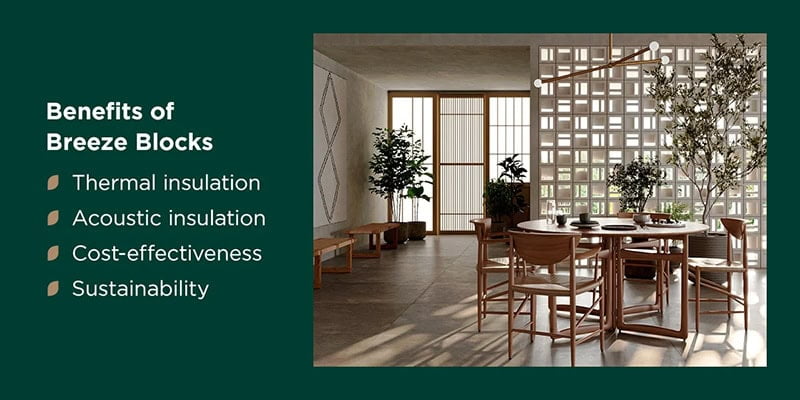
A breeze block's shape, size and composition have plenty of benefits, like its natural resistance to fire or the need for fewer blocks when you use larger ones. The size also reduces the number of joints in the wall, making it stronger and less likely to crack or fail.
Another benefit is their hollow design, which makes them lighter and easier to handle. Other benefits of these blocks include:
- Thermal InsulationBreeze blocks have excellent thermal insulation properties, which can help to reduce heating and cooling costs in buildings. The hollow cores of breeze blocks provide an insulating barrier that helps keep the interior of a building at a consistent temperature.
- Acoustic InsulationMore solid breeze blocks also provide acoustic insulation. The blocks are porous, which helps to absorb sound waves, reducing the amount of sound that passes through the wall. Combining their pores with their size and mass reduces sound waves from passing through the wall.
- Cost EffectivenessThese blocks are made from simple and affordable raw materials such as cement, sand and water. Compared to other building materials, such as bricks or solid natural stone, the raw materials for breeze blocks are generally less expensive. Because of their size, builders can lay more quickly, reducing labor costs and overall construction time.
- SustainabilityBreeze blocks are environmentally friendly, as they are made from locally sourced materials, and property owners can recycle the blocks at the end of their life span. Using breeze blocks in construction can contribute to earning green building certifications, such as Leadership in Energy and Environmental Design (LEED) or Building Research Establishment Environmental Assessment Methodology (BREEAM).
Why choose Jonite breeze blocks?
Unlike traditional concrete breeze blocks, Jonite Breeze Blocks are a game changer in the architectural world, providing enhanced durability, unmatched versatility and unparalleled aesthetics. Made from Jonite’s composite stone- a blend of recycled aggregates and crushed natural stone such as granite and sandstone- these architectural breeze blocks outperform conventional concrete in strength and longevity, all white significantly reducing water and heat absorption.
Whereas concrete blocks often have one dimensional aesthetic, Jonite Breeze Blocks offer a myriad of colours, finishes and designs. This wide colour range is a testament to the use of natural stones, contributing to the blocks’ ability to blend into various architectural styles and adding a touch of sophistication to any design.
Authentic Stone Appeal
Immerse yourself in the enduring allure of stone, impeccably captured in Jonite’s diverse palette of colours and designs.
Sophisticated Self Cleaning
Benefit from Jonite’s cutting edge self cleaning technology with anti-algae properties, ensuring enduring beauty and effortless maintenance
Exceptional Performance & Durability
Discover the unmatched strength & resilience of Jonite’s stone composite material, setting a new standard in architectural excellence.
Unrivalled Customisation
At Jonite, your design reigns. Personalise sizes, colours, patterns, strength and design to create unique breeze blocks that authentically reflect your architectural vision.
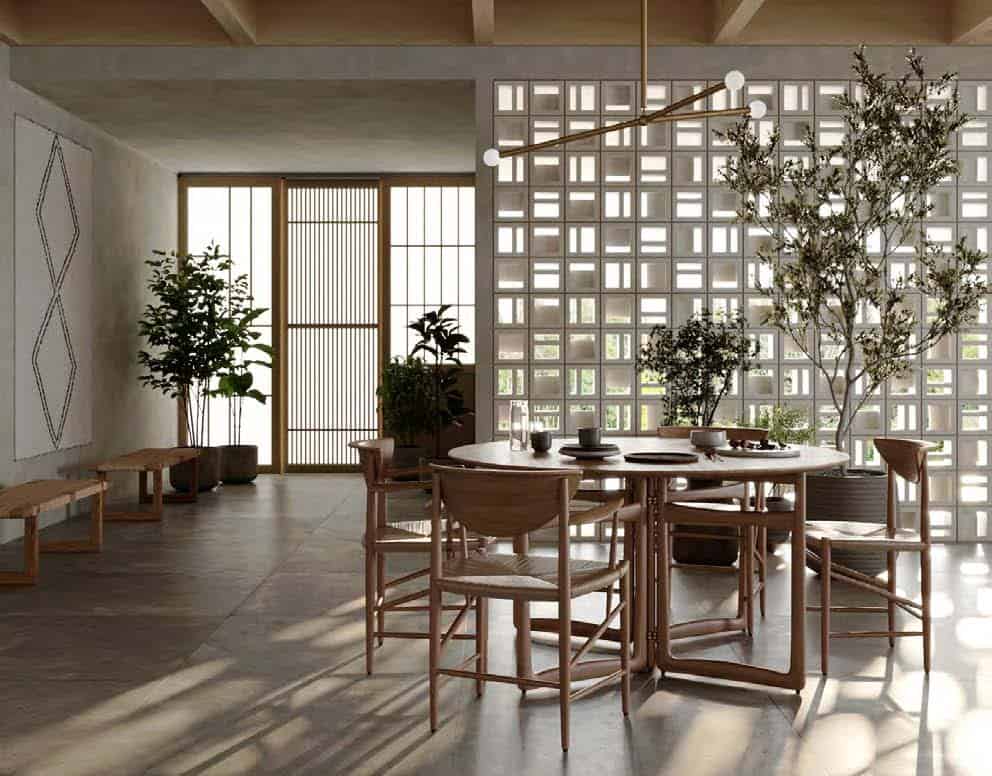
With Jonite Breeze Blocks, seamlessly enhance your external hardscape, landscape, and interior projects across residential and commercial developments, transforming your creations into architectural marvels.
Crafted from their proprietary Jonite stone composite material, renowned for its exceptional performance across their product range, the Jonite Breeze Block offers low water absorption, unmatched durability, high compressive strength, and an extensive variety of natural stone aesthetics. Jonite’s dedication to quality and innovation ensures that every Breeze Block stands as a testament to the enduring elegance of natural stone. Safety remains paramount in all architectural endeavours, and the Jonite Breeze Block adheres to this principle. Rigorously tested and certified Class 1 for flame spread according to BS 476: Part 7: 1997, you can confidently integrate Jonite Breeze Blocks into your designs, meeting the strictest safety standards.
The Jonite Breeze Block’s unrivalled customisation possibilities set it apart. Their diverse collection of designs and colours empowers you to realize your unique vision. For truly bespoke creations, Jonite’s team of experts is ready to collaborate, crafting custom designs that encapsulate your artistic expression.
In addition, the Jonite Breeze Block features advanced antialgae self cleaning properties, ensuring enduring beauty with minimal maintenance. This innovative aspect guarantees pristine appearances while simplifying up keep.
Discover the harmonious blend of artistry and innovation with the Jonite Breeze Block, and elevate your architectural projects to unparalleled heights. Redefine design excellence with this exceptional product that skilfully unites form and function
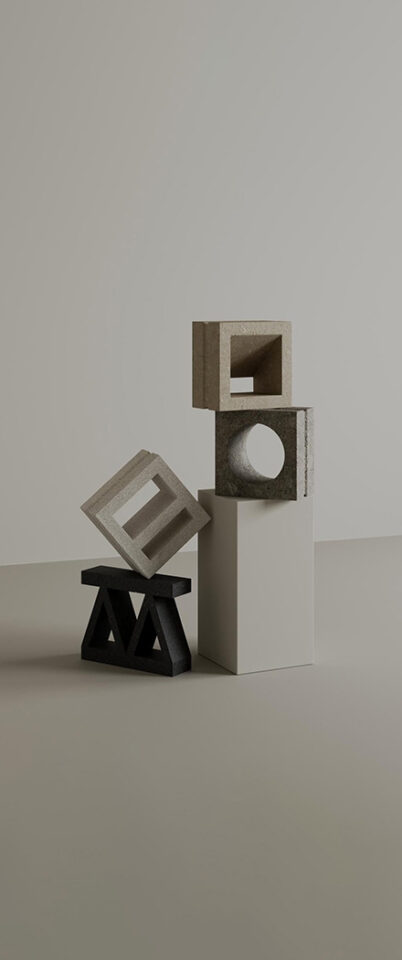
Modubloc
Discover limitless potential with ModuBloc: Quadra’s artful rectangular openings blend seamlessly with Bevel’s distinguished sloping profile. Unite these versatile breeze blocks to create custom configurations that elevate your architectural landscape.
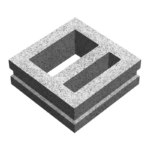
QUADRA-200
200mm x 200mm x 75mm
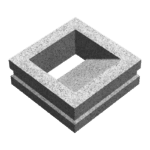
BEVEL-200
200mm x 200mm x 75mm
Elementa
Embrace the beauty of geometry with Elementa: Vista’s continuous
double triangles and Nexus’s pristine, concentric circle enchant and
inspire. Allow these singular, minimalist breeze blocks to command
attention, amplifying the core of your design ethos.
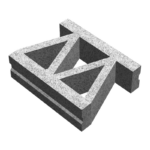
VISTA-250
250mm x 200mm x 75mm
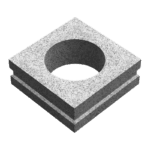
NEXUS-200
200mm x 200mm x 75mm
Contact us to learn more
Reinforced stone breeze blocks are fortified with stone aggregates such as granite, marble and limestone. They are known for their high compressive strength and pleasing aesthetic quality due to their natural stone aggregates.
Jonite will soon expand into the creation of reinforced stone breeze blocks. They can be made in different sizes and shapes and even molded to create unique and intricate designs. This flexibility in design makes them a popular choice for architects and engineers who want to create distinctive and visually appealing buildings.
Contact us to learn more about customised blocks to suit specific project requirements.